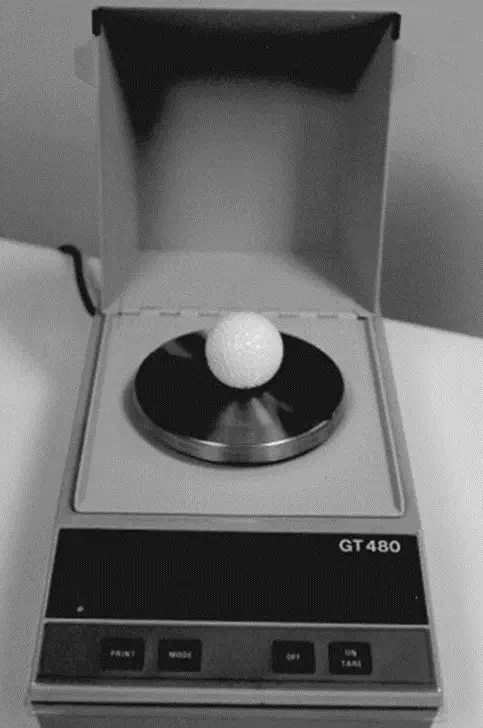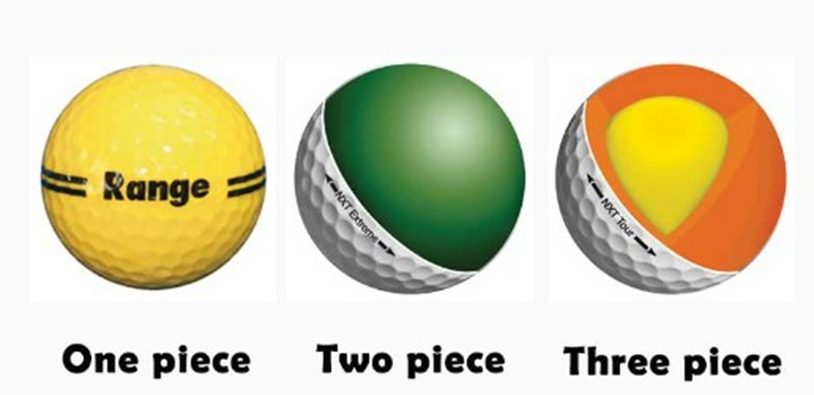The right choice of a ball can significantly affect the outcome of a round of golf. As an expert player, you should know the key factors and basics of golf balls, such as the average dimension and weight.
When you choose the right ball for performance, accuracy, and distance, you can ensure the utmost performance and enjoyment of the round. For a start, there are rules in place regarding what a ball weight should be when playing an official game and mass.
This is to give every player a chance at fair competition. In this post, we will look at details regarding the weight of golf balls and what the average weight should be. Let’s get right into the comprehensive details!
The USGA standard of the weight of an average golf ball is 1.620 ounces or 45.93 grams. Any golfer participating in an official game or tournament and using a higher or significantly lower weight golf ball will be disqualified.
How Much Does a Golf Ball Weigh?
According to the USGA standards, an average golf ball should weigh about 1.620 ounces or 45.93 grams. That means if you are going to a golf course for an official game, you should ensure that your golf ball weight is less than 46 grams.
If your ball weighs more than this while participating in a competition, you will be disqualified. It is worth mentioning that the condition of the ball contributes to the difference in the average weight. In average conditions, golf balls weigh about 1 – 2.9 grams and the difference depends on the usage.
To ensure you have a reliable golf ball weight, it is recommended that you use new balls when playing in an official game because they only have 0.1 grams weight variance.
Conversely, worn-out golf balls and those in poor conditions will have a higher weight variance from ball to ball. Sometimes, the variance can be as high as 3.5 grams. Therefore, stick to new balls when playing professionally.

Other Key Factors Contributing to the Average Golf Ball Weight
Many other factors affect the average golf ball’s weight in terms of the mass and everything that goes into making it. These include the diameter of the ball and the materials used by the ball manufacturers.
In this section, we will look at different factors that affect the weight of a golf ball.
Weight
Just like the weight of a golf ball, the diameter is also crucial to the overall ball size. That is why strict requirements must be met by ball manufacturers when producing golf balls. A ball should be at least 1.68 inches or smaller in diameter.
This makes the ball less responsible to the winds and enables players to easily hole out the golf ball. When the ball is of the right diameter, there will be less chance of additional roll caused by the weather.
Construction
The construction and materials used in making a golf ball are also critical and the requirements the manufacturers are expected to adhere to. This is to ensure that all players have an equal advantage, irrespective of the brand of ball they choose. Golf balls are not expected to offer an unfair advantage to any golfer.
However, it is worth mentioning that innovation and contemporary technology have made it possible for ball manufacturers to develop multi-level cores in balls to increase the control and distance of the golf ball. Manufacturers now use one-piece, two-piece, three-piece, and even four-piece golf balls to enhance players’ performance on the golf course.

Compression Types
The compression type of a golf ball affects the flight path. Therefore, it is a crucial factor to consider when looking at the construction of a golf ball. There are two types of compression when it comes to a golf ball.
These are high compression and low compression. High compression balls are great for golfers with a faster club-head speed, while low compression balls are perfect for golfers with slower swing speed because they are softer.
Why Does the Golf Ball Weight Matter?
We have explored answers to how much a golf ball’s weight matters but another important question is why it matters in the first place. Why should golfers pay attention to the size of their golf balls? Why would golfers get disqualified if their balls were found to be at high variance from the standard?
The truth is that the weight of a golf ball is a crucial factor because it determines how far the ball will go. Golf balls that have a higher weight of more than 45.93 grams are not legal and should not be used for professional tournaments because they can give a professional golfer an undue advantage while on the golf course.
There is a minimum size golf ball required for all professional tournaments or official games and that has to do with the diameter. A diameter of a ball with lesser than 1.68 inches makes it unacceptable and illegal to use during a game. The reason for this is that smaller balls travel at a faster speed and even further. That is because they have minimal friction on the way as they travel in the air.

Golf Ball Mass
The ball weight is a significant consideration for ball manufacturers. Manufacturers must test the diameters, weight, and dimensions of the ball to ensure it meets industry standards before releasing it into the market. A standard golf ball should come a little under 1.620 ounces.
It is worth mentioning that the standards were established when the first golf balls were produced long ago. At that time, the earliest golf balls were no more than hand-made, crudely-made sphere-shaped balls made with cloth or leather. (1)
Today, there are wide varieties of golf balls in the market that golfers can explore. The interesting thing is that the standards remain the same despite the huge development in production and materials.
Usually, the velocity and speed of the balls are tested to guarantee that the diameter and weight of the balls are precise and within legal limits. Although some balls may slightly vary due to the ball manufacturer and components, the standard is that every new ball must weigh an average of 0.1 grams of 45.93. (2)
Take a look at some of our related articles below.
- Best golf balls for the average golfer
- How many golf balls fit in a 5 gallon bucket
- Best cheap golf balls
842091
References
(1) leather – https://www.britannica.com/topic/leather
(2) legal limits – https://plato.stanford.edu/entries/law-limits/

Comments are closed